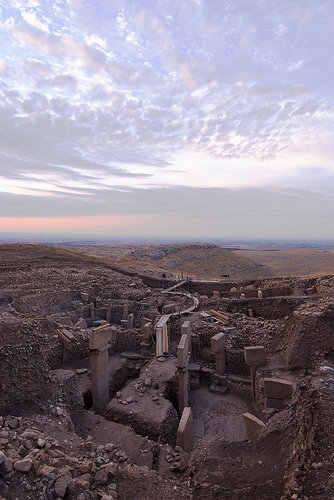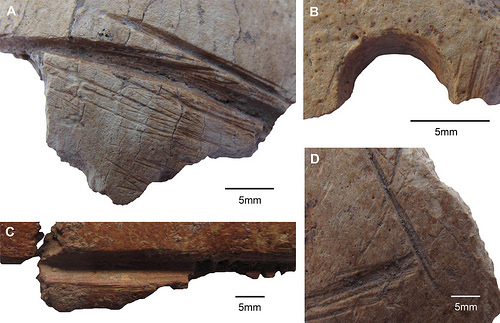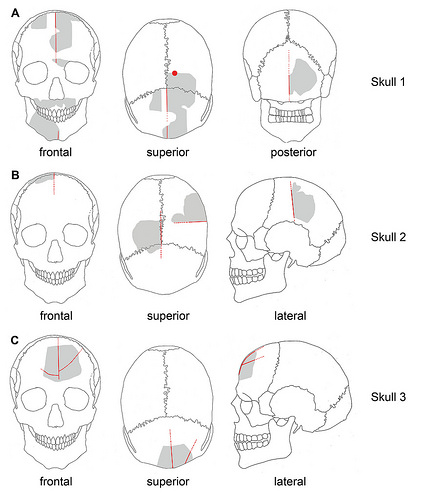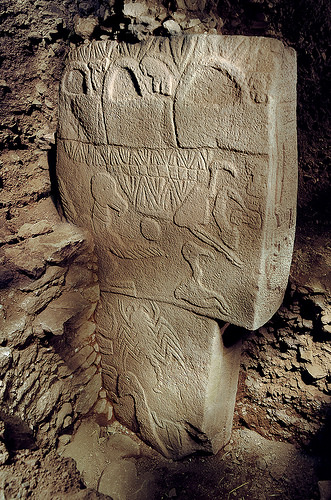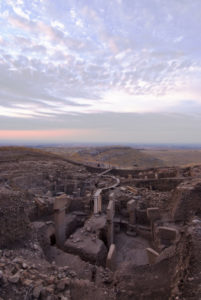
Three carved skull fragments uncovered at a Neolithic dig site in Turkey feature modifications not seen before among human remains of the time, researchers say. Thus, these modified skull fragments could point to a new “skull cult” — or ritual group — from the Neolithic period. Throughout history, people have valued skulls for different reasons, from ancestor worship to the belief that human skulls transmit protective properties. This focus on the skull has led to the establishment of the term skull cult in anthropology, and various such cults — each with characteristic modifications to skull bones — have been catalogued. Recently, Julia Gresky and colleagues observed a previously unknown type of modification in three partial skulls uncovered at Göbekli Tepe. Each skull had intentional deep incisions along its sagittal axes and one of those skulls also displayed a drilled hole in the left parietal bone, as well as red ochre remnants, the authors say. By using different microscopic techniques to analyze the fragments, Gresky et al. verified that the carvings were executed using lithic tools, thus ruling out natural causes, like animal gnawing. In addition, they were able to discount scalping as a source of the marks, due to the depth of the carvings; however, other minor cut-marks on the skulls show signs of possible defleshing, they say. More likely, the skulls were carved to venerate ancestors not long after their death, say the authors, or, to put recently “dispatched” enemies on display. These findings, published in an article about the research in Science Advances*, present the very first evidence for treatment of the dead at Göbekli Tepe.
_____________________________________
Göbekli Tepe “Southeast-Hollow.” Credit: German Archaeological Institute (DAI)
_______________________________________________________
Details of artificial skull modifications. A, C, D: carvings, B: drilled perforation. Credit:Julia Gresky, DAI
_______________________________________________________
Schematic drawings of Göbekli Tepe skulls. Gray, preserved elements; red, modifications. Credit: Julia Gresky, Juliane Haelm, DAI.
_________________________________________________________
A pillar from Building D at Göbekli Tepe seen from the southeast. Credit: German Archaeological Institute (DAI)
_____________________________________________
*Science Advances is published by AAAS, the nonprofit science society.
__________________________________________________
Receive 30 days free access to the popular new CuriosityStream lineup of documentaries on science, history, nature, and technology as a new Popular Archaeology premium subscriber.
___________________________________________
Travel and learn with Far Horizons.
____________________________________________
This richly illustrated issue includes the following stories: Recent findings shedding new light on the whereabouts of the remains of Philip of Macedon, father of Alexander the Great; how an archaeologist-sculptor is bringing bones of the dead back to life; archaeologists uncovering town life at the dawn of civilization; an exclusive interview with internationally acclaimed archaeologist James M. Adovasio about what makes the Meadowcroft Rockshelter prominent in the ongoing search for the first Americans; what archaeologists are finding at the site of the ancient city of Gath, the home town of the biblical Philistine giant, Goliath; and how scientists are redrawing the picture of human evolution in Europe. Find it on Amazon.com.

